Written by Guest Contributor on The Prepper Journal.
Editors Note: A guest contribution from Ukrainian to The Prepper Journal. A very interesting article on security from the real world, happening every day, as we here are bombarded with stories of “political correctness”, paid demonstrators and fake news. I have only made minimal corrections to the English grammar as the authors English is far superior to my Ukrainian!
Here is his bio unedited: Here is my story just to prove that it is my own experience: I was sent as a deputy commander of task group to the East of Ukraine two years after the Russian invasion of Ukraine in 2014. According to our mission, we camped for indefinite duration in the forest approximately 70km away from the battle line. We had to hide in the forest not to be spotted by drones and stay there as long as the equipment we were watching over was not needed closer to the battle line. We had to count only on ourselves, and we had to post security guards around and be able to perform all the time dismounted patrolling as it was impossible to build any fence around such a huge territory. We were supplied with provisions (food/water) and fuel, but all the rest was made with our axes and shovels.
Surviving in a community after TEOTWAWKI is what I choose. This is the only way not just to survive but to have the possibility to live on and save your family and future generations, to be able to farm and rebuild our world step by step.
“No, I can do it alone, I don’t need anyone to protect my loved ones” – this is a typical first mistake that I hear from young and ambitious people who have never lived in a forest alone. I have done just that. I cannot imagine living in the wilderness alone and being responsible for the lives of my wife and children when other people or gangs will be trying to take away our food, medicine or worst of all – my daughters! As you can read in other article presented here, the number of people looking for your provision will be quite large. So, if you want to be secure, you can build a fence or a wall or just hide in the house, but to be ultimately secure, this is useless. Hungry people are armed and no less clever than you. The only thing that can stop them is by being armed and ready to repell an attack.
How Does One Function Without Rest?
How long can you be awake even sitting in a corner of a room or cave watching the corridor or entrance? Without resting, taking time to prepare meal or to go to the toilet? What will you do if someone tries to ferret you off?

People we know these answer: according to studies we were provided within our military courses, the average trained soldier will no longer be operational on the fourth day without sleep. If there is any possibility to sleep, the picture is as follows:
- 30 minutes per 24 hours – operational availability lasts from 3.5 to 4.5 days
- 1.5 hours per 24 hours – operational availability lasts from 6 to 7 days
- 3 hours per 24 hours – 91% of soldiers are fully operational not less than 9 days
- 4 hours per 24 hours – 93% of soldiers are fully operational not less than 12 days
- 5 hours per 24 hours – 96% of soldiers are fully operational not less than 90 days
The term “operational” means that you can run (not far away), shoot and work. But it is hard to concentrate, make a decision or keep your emotional stability.
- 6 hours per 24 hours is the minimum time required for a decision-making person to be in an adequate psychological state
- 7-8 hours per 24 hours is enough for 98% of people to keep optimal muscle tone and and their mental stability.
Don’t try to compare the table mentioned above to your current life; it has nothing to do with a life in peace that you have today, without the added stresses of a loss of the ROL and while you access to everything you need.
So as you see, all people are helpless during the period of sleep. It is clear, isn’t it? Let’s go further – work in pairs. It is still not a solution, but of course if you are the only two who survived in the group, it is the only option.
The “Gamer” Mindset
I would like to talk about what we need to organize a functional and proper defense for a long period with the possibility to work and rest enough for all. So let’s start from the beginning (or the end of the world as we know it).
Those who play real-time strategy video games know that to control the territory, you need to put a unit there. The unit usually has a 360-degree observation zone and maintains control all the time. In the case of an attack or an enemy spotting, the others are automatically informed about it. This has nothing to do with reality where everything is up to human beings. First – humans have a slightly over 210-degree forward-facing horizontal arc and can concentrate only for a short period of time. Second – in the case of an attack, you (sitting in a camp) will never know about it if the “unit” does not send you a signal. Even in the 21st century, it is a challenge not to miss one of the outpost guards being eliminated unnoticed, so, in reality, without any radio or electronic communication, only the sound of a shot or screaming can be a signal in the real world. To prevent that, you have to provide an advantage to the man on the post. You have to provide an edge to better insure the possibility of seeing the enemy first. Third – only in games are units are always armed and know where to run. In real life you have to teach people how to cope with panic and where to run. Forth – one shot indicates just an alarm, possibly a direction, nothing more.
According to an old USSR manual on guard duty, the patrolling course of a guard post has to be organized with a telephone handset placed every 50 meter and connected with quick-reaction alert unit. Everyone in the same Verizon text-sharing group will be the first thing to go when the SHTF. But in a case of instant danger to life a soldier on sentry he has to shoot first and only then to report. For the quick-reaction alert unit the shot is a signal to move forward to the attacked post, if they have determined which post on the single shot. A second shot fixes this BUT also lets others, enemy know exactly where they need to go as well.
More specifically, let’s simulate a real-life situation when you have to protect only one access point to your position/bunker/shelter (theoretically it can be a long corridor or tunnel, where the other side is blocked, or a staircase serving your story). You need at least two reliefs by 3 people. So, in total, 6 men are needed to guard only one direction/sector 24/7.
I would like to explain this assertion. To have one man all the time on an observation post, you need at least 3 men for a day. And in three weeks, those three men will be ill, indifferent to any danger and trying to fell asleep anywhere according to studies, as they will have no possibility to sleep more than 4 hours per day. Their possibility to react quickly and to work will start to decrease dramatically by the end of the first week. Their heart rate will be approximately 20 bpm higher than normal. In conditions of constant threat, those three men will face mental disorder by the end of the second week.
When I was sleeping less than 5 hours per day, working during the daylight and administrating the camp at night, it was hard to stay calm, in one week my reaction was slower, I experienced headache and was angry with anything that wasn’t as I expected it to be.
Giving them one day of rest is the best way to avoid all these negative consequences. So with two reliefs, with three people in each, you have a very extended period (up to year or more) for securing one post. BUT don’t expect these 6 people to do anything else. Every day three of them will use any free time to sleep/rest/eat/toilet and return back to the post while the second group prepares for the next day, sleeping approximately 7-8 hours and not being able to do hard physical work more then 3-4 hours per day (cleaning, repairing, cooking, etc.).
So you can’t rely on them if you need to build or go out on patrol or to gather supplies. After such exhausting work, they will hardly be able to go to the post and stay prepared.
You may say that only two men per day are enough for one post and that they can sleep 6 hours, changing each other whenever they want and as they like. But I have some arguments why it is impossible.
First, you don’t have any communication devices (no electricity to recharge), so while “unit A” is sleeping and “unit B” is on the post, the third (“unit C”) is preparing and moves to the post. All the time in such a routine two of them are ready. Only one can rest. This is a way not to be killed while sleeping. The way and the process of changing is usually not more than 15 minutes if the post is 5 minutes away. Before exiting, “unit C” wakes up “unit A” and leaves. In 10 minutes “unit B” has to come and only then “unit A” can sleep one more hour. If nobody returns – it is a signal for fight for “unit A”. Then “unit B” has 30 min for eating/drinking/toilet before he is ready to go to sleep, sending “unit A” to change “unit C”. Thus you see that such a routine gives the possibility to control all the process by all three men without leaving any of them alone. And in my case (as I experienced such a routine in a forest in winter), we needed one man tending the fire in the tent and controlling the tent.
Second, waiting for an attack is really exhausting, as the watching man has to listen, watch, smell, keep silent and feel his weapon ready for use. The watchman has to be replaced on the post every two hours by the next if we want to have efficient protection, as it is based on the reaction of a human, not a robot. If the weather is bad (very cold and windy/rainy), the changing time cannot be more than one hour.
Third, two people only create a great risk if one falls asleep, gets assassinated unnoticed, or leaves the post in unusual circumstances.
In my experience, we used “one man on a post” only to protect some important objects inside the camp as an additional measure (to protect our ordnance dump etc.). But to afford protection from a real outside threat, minimum two people on a post (double sentry) are required. This dramatically increases the observation quality of the sector and decrease risks to lose one man in a covered attack.
The approach “two men per one post” is widely used and requires 6 men per one relief. 12 men are needed for one post protecting for a long period. And once again, I want to underscore that it is only for protection; no other serious work can be done by those people.
What Does All this Mean for Preppers?
That brings us to the understanding that in case we need to make a really efficient protection of a small settlement, we have to surround it by observation posts. Let’s imagine the ideal camp on a paper (in reality, it can be really hard to find such a place). There is a post on every corner of the square and, what is really important, eye contact of every post with their neighboring two posts.
The area conditions matters; in fact it is the most important in planning the protection line. Across a field you can distinguish the head of a person at a distance of 400 meter (apx. 1/4 of a mile), while the color and details of clothes can be seen from 250 to 300 meter. Eyes as spots are seen from 60-80 meter. During the night, a normal person talking is heard from a distance of 200 meter. So, depending on the skills and weapons you have and the threat you expect, the distance between posts without any communication devices can vary, but it is reasonable to make not more than 200 meter distance between two posts to be able to control each other and the line between.
For example the Nazi World War II Eastern Front military headquarter located in a pine forest about 12 kilometers (7.5 mi) north of Vinnytsia (Ukraine) was surrounded by 36 outposts placed every 200 meter. Of course it was just a first line of defense; there were also tons of barbed wire, concrete, bunkers and ditches but they were preparing to protect against guerrilla forces and commando, not from “just hungry armed people”.
Let’s move on. You can easily spot the movement of man’s arms and legs from a distance of 700 meter so the field in front of the post has to be not less than that to use all your capabilities sitting in a prepared firing position. At the same time, people on a post can’t use open fires because that is like an advertisement for the enemy. For example, at nighttime, smoking a cigarette can be spotted without any optics from the distance of 400-500 meter, one stroked match is visible from a distance of 1500 meters (apx. 1 mile), and a common fire on a ground can be spotted from 6 to 8 kilometers (apx. from 3.7 to 5 mile). That is one more reason to change people every two hours, as they can’t warm up/dry with fire or smoke on the post.
I lived in an organized armed group that was cut off from civilization, living in the forest and waiting for enemies to come from any side. I was responsible for the security line around the camp and, due to the obstacles, this was really close to “surviving conditions”. The only difference – we had walkie-talkies but were expecting radio jamming, so we exercised old military procedure when no electronic devises were used.
Our military tactic is very simple to remember – spot first, shoot first, hit first. To perform that all you need is an open area and 24 hours of eye control of it. Our day’s efficient shooting distance of average combatant was 500 meters with open barrel sight. You have to see the enemy from a longer distance and be in well prepared watching post not to allow them cross the line of 750 meters (the efficient shooting range with simple old optics).
According to method we used, let’s count what is needed for the permanent protection of the camp with four posts.
If we have 4 posts with at least 2 people on it to make a simple square, that makes 8 men standing. You have to change the watchman every 2 hours (if the weather isn’t very cold, otherwise only one hour without rotation). For 3.5 hours for sleeping in the night you should have 3 pairs of guards. One day of “square” guard without patrolling is 4*(2*3)=24 people. Complete the cycle of endless protecting routine of the camp would theoretically require 24*3=72 soldiers. Why theoretically? Because in practice some of them will be injured or become ill in the first two weeks and should be replaced.
Then you need a commander, who has to control the process and to check all the posts. This makes plus 3 better trained trusted men (one for 24 hours, usually it is sergeants/officers).
So in total: 4*(2*3)*3+3=75 people is needed for protection and the same time each relief is able to work every third day. So you have an ideal model when there are enough people to guard and work every day.
Of course you can do the same task with two reliefs, in case of a lack of personnel, and you can put only one man per post. But you should be ready that they will not able to work efficiently, fell like a boiled rag by the end of the first month, and your defense will be extremely vulnerable.
If you expect the guard to be in good condition, you have to give them two days with 7-8 hours for sleep. And the same time they will be able to work hard for one day and complete light work for another one.
“Light work” means day-to-day work. When I was administrating our military tent-camp in forest, we were supplied by food/water and lumber. Even with that, we had a lot of work to do:
- The place for toilet has to be dug and replaced time to time (in my case once per two week)
- Cast-iron stoves need a lot of wood to be filled, so we spent not less than 3 hours per day for chopping (five stoves inside tents and one for water heating in a washing tent).
- Someone has to cook
- Someone has to keep the fire all the day in cold weather and time to time in warm weather if the humidity is too high inside the tents (shelter)
- Everything in storages has be taken away for airing and drying very often and brought back, as living in nature is not suitable for our stuff
- You have to organize place for washing and warm up water there every morning and evening; you need at least one man to clean that place and one to bring water to the tanks and make fire/warm it
- All weapons have to be oiled and cleaned after any use or once per week just because you don’t want they become rusty
- Days after rain are totally full of work for tent settlements – you have to dry everything and to dig drainage flows again
- You have to repair and build as much protection systems as you can. This is not impossible to finish, as there is no limit to make it perfect or even enough using wood and soil (unless you have enough concrete for your needs)
- We had separate tent for the sick with medics looking after them; that’s also serious work that HAS to be done.
“Hard work” – in our case it included going to the fighting line, patrolling the area and nearby villages, etc. After TEOTWAWKI , that would include, as I see it, expeditions for loot, provision and anything else you need but can’t produce.
I have tried to explain how to organize a 24 hour protection system and how many people you need. You might not agree with me, but I have just described what I have experienced, which worked very efficiently for more than half a year. Of course you may introduce patrolling and add more posts, but now you can imagine the approximate number of people you need.
I think there is no need to say that in the case of attack, all people in a settlement “resting and working” take arms and run to prepared defensive positions and reinforce the posts.
Editor: And, as always, if you have information for Preppers that you would like to share and possibly receive a $25 cash award as well as be entered into the Prepper Writing Contest with a chance to win one of three Amazon Gift Cards with the top prize being a $300 card to purchase your own prepping supplies, enter today.
The post Predicting Your Security Needs After the SHTF appeared first on The Prepper Journal.
from The Prepper Journal
Don't forget to visit the store and pick up some gear at The COR Outfitters. How prepared are you for emergencies?
#SurvivalFirestarter #SurvivalBugOutBackpack #PrepperSurvivalPack #SHTFGear #SHTFBag

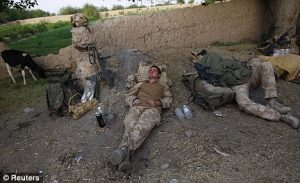

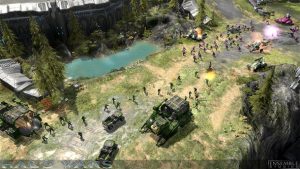
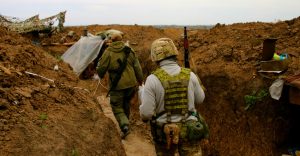
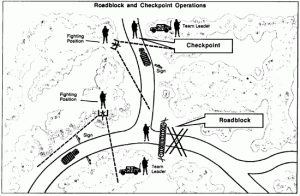

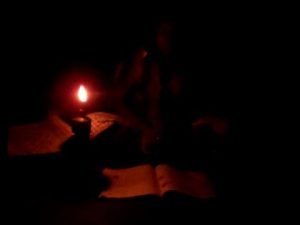
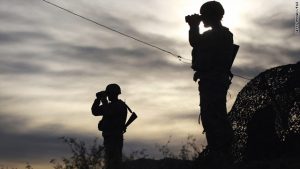
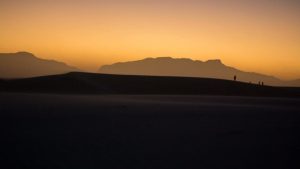
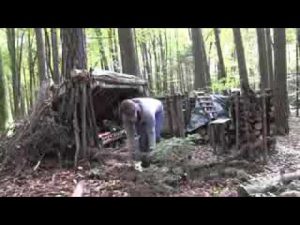
No comments:
Post a Comment